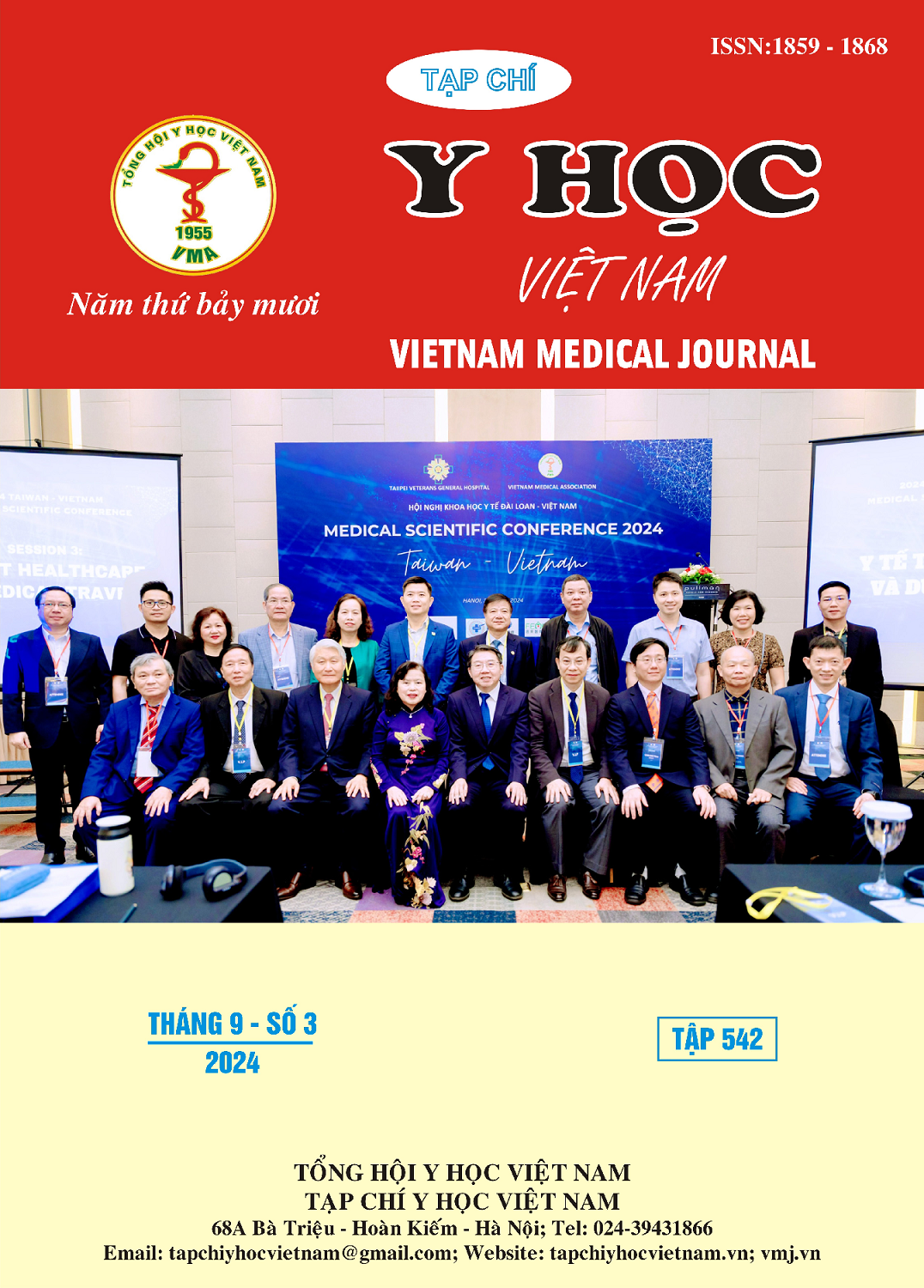ỨNG DỤNG KỸ THUẬT CAN THIỆP NỘI MẠCH ĐIỀU TRỊ HẸP TẮC TĨNH MẠCH TRUNG TÂM Ở BỆNH NHÂN CHẠY THẬN NHÂN TẠO
Nội dung chính của bài viết
Tóm tắt
Giới thiệu: Hẹp tắc tĩnh mạch trung tâm (HTTMTT) là một vấn đề phổ biến ở bệnh nhân chạy thận nhân tạo, làm giảm hiệu quả lọc máu và ảnh hưởng đến chất lượng cuộc sống của bệnh nhân. Nghiên cứu này nhằm đánh giá bước đầu kết quả can thiệp nội mạch để điều trị HTTMTT. Phương pháp: Nghiên cứu này áp dụng kỹ thuật nong mạch qua da (PTA) với hoặc không kết hợp đặt giá đỡ nội mạch (stent) để điều trị HTTMTT. Các bệnh nhân được lựa chọn đều đang chạy thận định kỳ và có triệu chứng hẹp tắc tĩnh mạch trung tâm. Kết quả: Qua thời gian nghiên cứu từ tháng 01/2020 đến tháng 04/2024, 31 bệnh nhân suy thận mạn đang chạy thận định kỳ có hẹp tắc tĩnh mạch trung tâm đã được điều trị can thiệp nội mạch tại khoa Phẫu thuật Mạch máu, Bệnh viện Chợ Rẫy. Kết quả can thiệp thành công là 87.1%, với cải thiện lâm sàng rõ rệt về triệu chứng phù tay, đau tay và tuần hoàn bàng hệ dưới da. Kết luận: Kỹ thuật can thiệp nội mạch đã chứng tỏ hiệu quả trong điều trị HTTMTT, với tỷ lệ thành công cao và cải thiện chất lượng cuộc sống của bệnh nhân. Đặt stent được khuyến nghị để giảm nguy cơ tái hẹp và bảo vệ thành mạch, đặc biệt trong các trường hợp hẹp nặng, hẹp tái phát, hoặc có nguy cơ tái hẹp cao
Chi tiết bài viết
Từ khóa
Hẹp tắc tĩnh mạch trung tâm; Chạy thận nhân tạo, can thiệp nội mạch, nong bóng, đặt giá đỡ nội mạch (stent).
Tài liệu tham khảo
2. Echefu G, Stowe I, Lukan A, et al.: Central vein stenosis in hemodialysis vascular access: clinical manifestations and contemporary management strategies. Front Nephrol. 2023, 3:1280666. 10.3389/fneph.2023.1280666
3. Dariushnia SR, Walker TG, Silberzweig JE, et al.: Quality Improvement Guidelines for Percutaneous Image-Guided Management of the Thrombosed or Dysfunctional Dialysis Circuit. J Vasc Interv Radiol. 2016, 27:1518-1530. 10.1016/j.jvir.2016.07.015
4. Aruny JE, Lewis CA, Cardella JF, et al.: Quality improvement guidelines for percutaneous management of the thrombosed or dysfunctional dialysis access. Standards of Practice Committee of the Society of Cardiovascular & Interventional Radiology. J Vasc Interv Radiol. 1999, 10:491-498. 10.1016/s1051-0443(99)70071-0
5. Lok CE, Huber TS, Lee T, et al.: KDOQI Clinical Practice Guideline for Vascular Access: 2019 Update. Am J Kidney Dis. 2020, 75:S1-S164. 10.1053/j.ajkd.2019.12.001
6. Glanz S, Gordon D, Butt KM, Hong J, Adamson R, Sclafani SJ: Dialysis access fistulas: treatment of stenoses by transluminal angioplasty. Radiology. 1984, 152:637-642. 10.1148/radiology.152.3.6235537
7. Kitrou P, Katsanos K, Karnabatidis D: Management of Central Venous Stenoses and Occlusions. Cardiovasc Intervent Radiol. 2023, 46:1182-1191. 10.1007/s00270-023-03461-7
8. Eguchi D, Honma K: Results of Stenting for Central Venous Occlusions and Stenoses in the Hemodialysis Patients. Ann Vasc Dis. 2020, 13:235-239. 10.3400/avd.oa.20-00114


